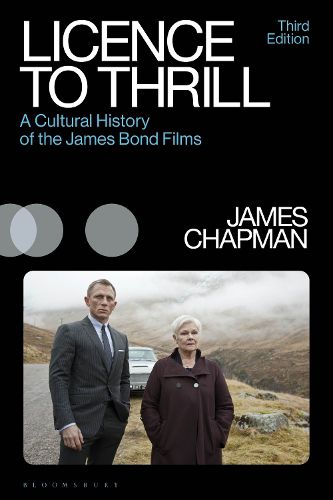Readings Newsletter
Become a Readings Member to make your shopping experience even easier.
Sign in or sign up for free!
You’re not far away from qualifying for FREE standard shipping within Australia
You’ve qualified for FREE standard shipping within Australia
The cart is loading…






In this new edition of Licence To Thrill, James Chapman builds upon the success of his classic work, regarded as the definitive scholarly study of the history of the James Bond film series from the first picture, Dr No (1962), to the present. He considers the origins of the films in the spy thrillers of Ian Fleming and examines the production histories of the films in the contexts of the British and international film industries.
This edition includes a new introduction and chapters on Quantum of Solace (2008), Skyfall (2012), Spectre (2015) and No Time to Die (2021). Chapman explores how the films have changed over time in response to developments in the wider film culture and society at large. He charts the ever-evolving Bond formula, analysing the films' representations of nationhood, class, and gender in a constantly shifting cinematic and ideological landscape.
$9.00 standard shipping within Australia
FREE standard shipping within Australia for orders over $100.00
Express & International shipping calculated at checkout
In this new edition of Licence To Thrill, James Chapman builds upon the success of his classic work, regarded as the definitive scholarly study of the history of the James Bond film series from the first picture, Dr No (1962), to the present. He considers the origins of the films in the spy thrillers of Ian Fleming and examines the production histories of the films in the contexts of the British and international film industries.
This edition includes a new introduction and chapters on Quantum of Solace (2008), Skyfall (2012), Spectre (2015) and No Time to Die (2021). Chapman explores how the films have changed over time in response to developments in the wider film culture and society at large. He charts the ever-evolving Bond formula, analysing the films' representations of nationhood, class, and gender in a constantly shifting cinematic and ideological landscape.